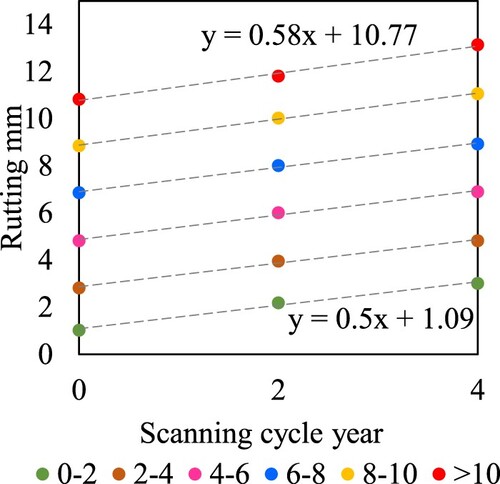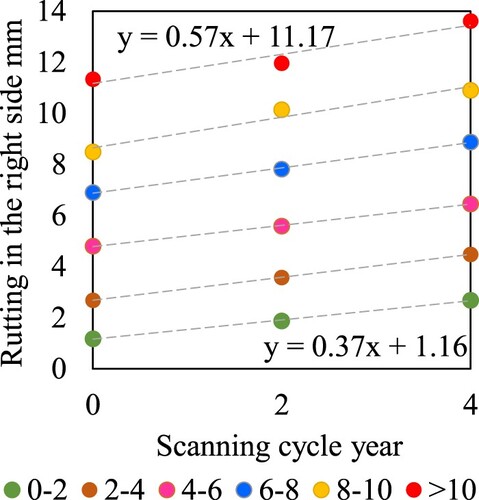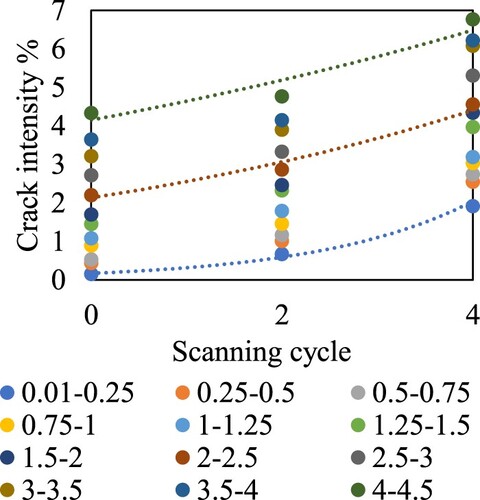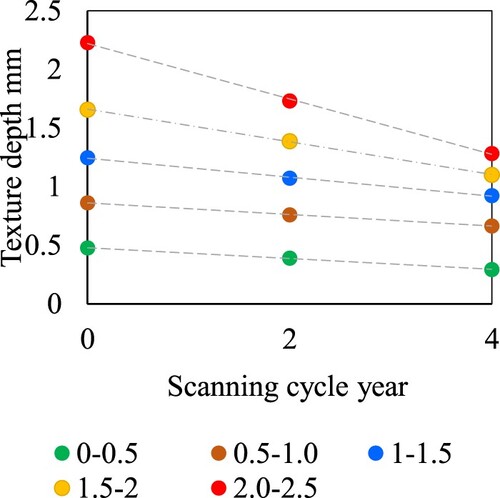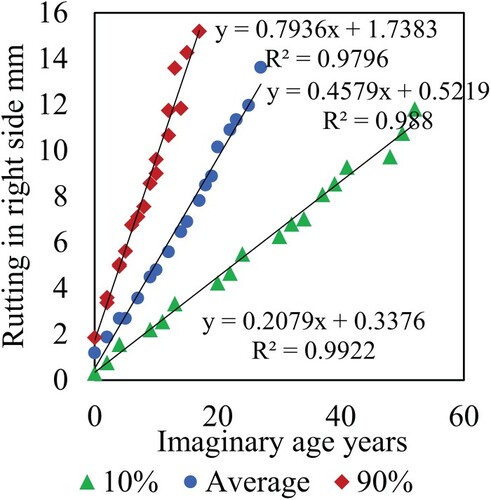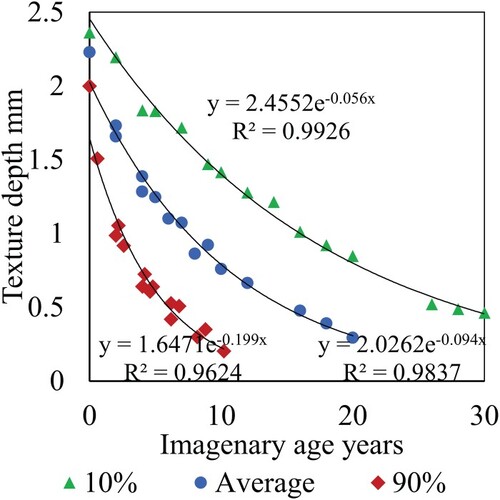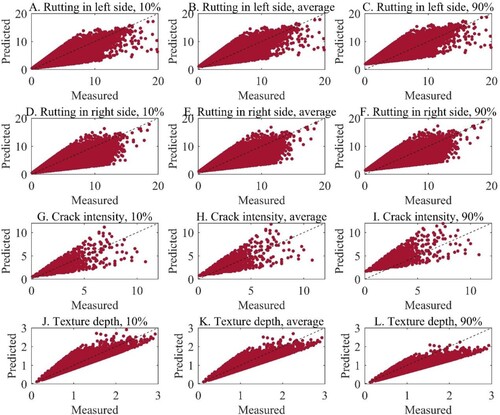Figures & data
Figure 2. A map showing the study area and the road sections used in this study (The shown points represent the scanned road sections; bridges, roundabouts, and intersections were not included in the survey).

Table 1. Sample of the raw SCANNER data used in this study.
Table 2. Data pre-processing methods (Kargah-Ostadi et al., Citation2019).
Table 3. Rutting data in the left and right wheel paths collected between 2014 and 2018.
Table 4. Crack intensity and texture depth deterioration models at 10%, average, 90% reliability levels.
Table 5. Number of sections used in the validation process with, MSE, and R2 results.
Table 6. Criteria considered to rank the accuracy of the distress predictions.
Data availability
The data underlying this article will be made available upon reasonable request from the corresponding author subject to data owner approval.



